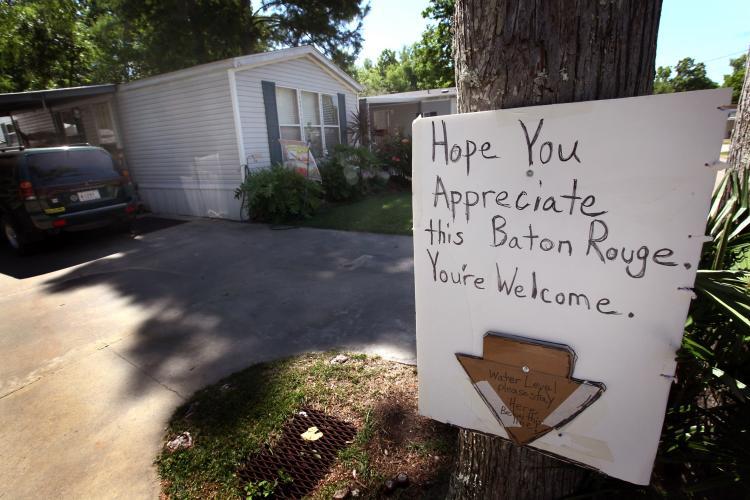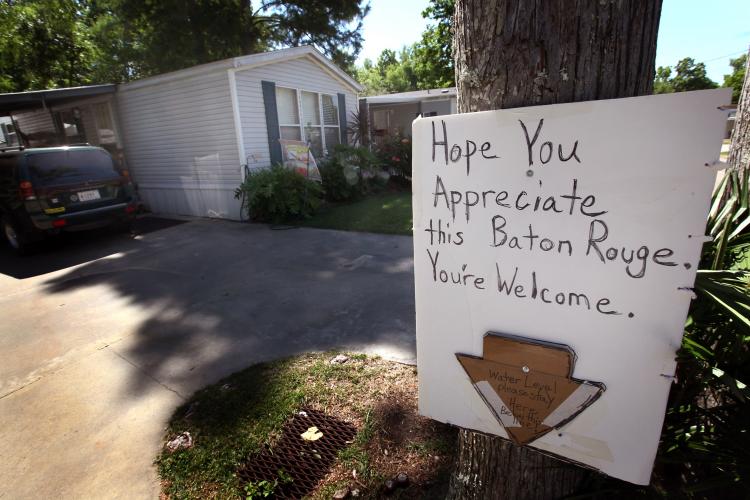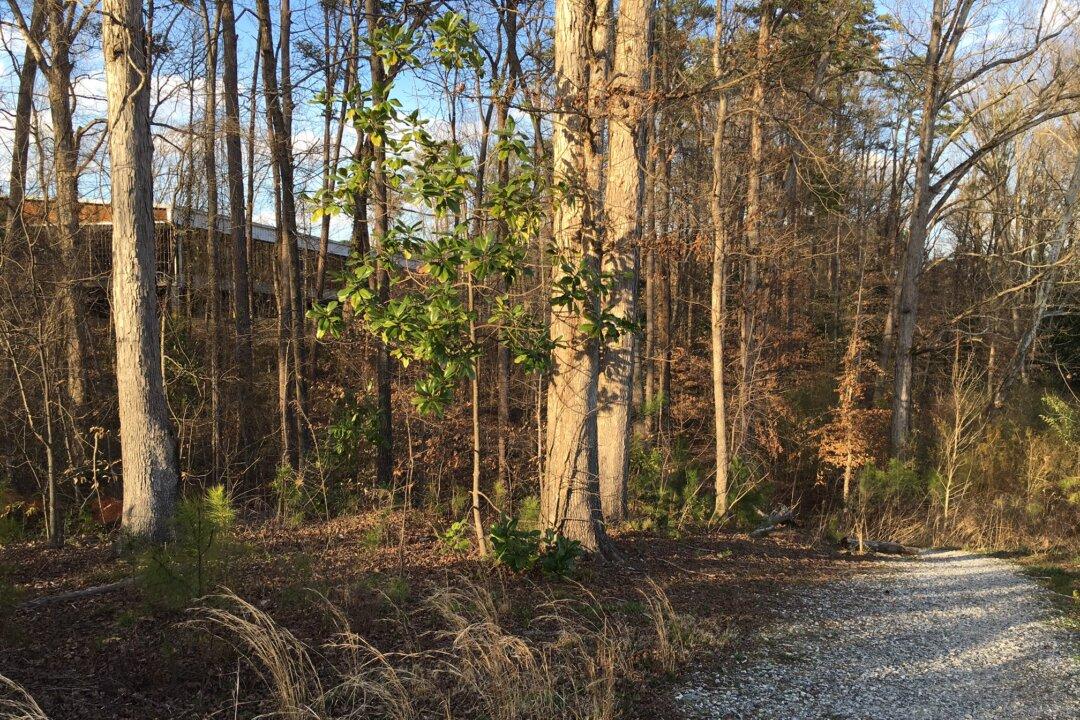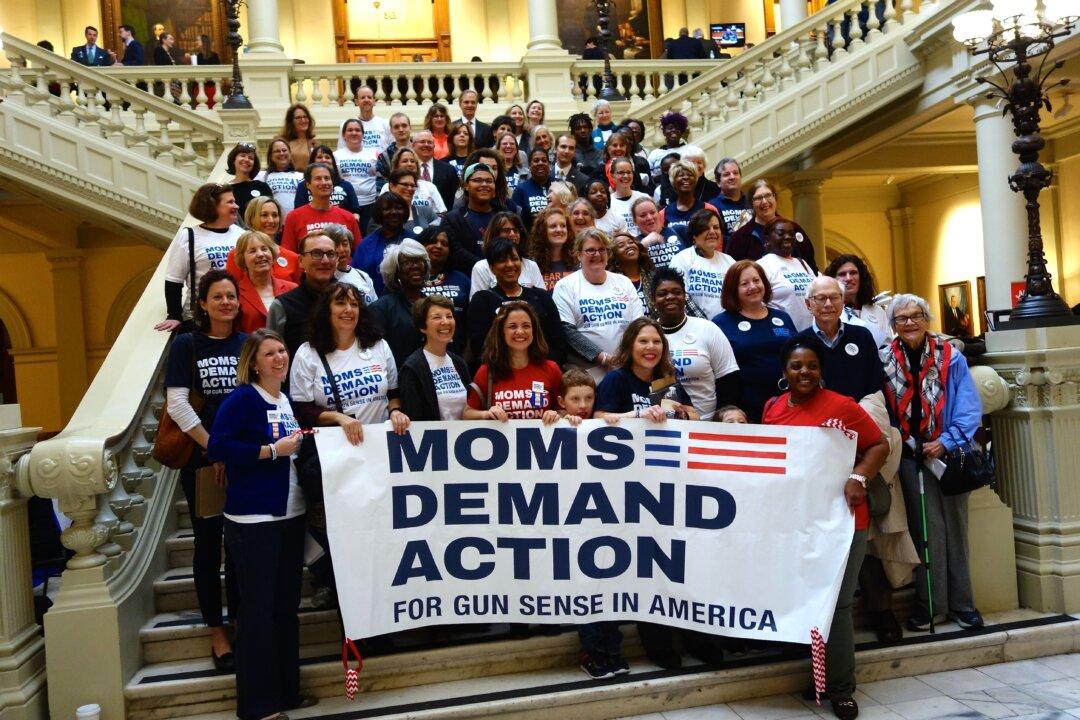Morganza Spillway Opens in Louisiana
Despite a mandatory evacuation order, some people in St. Landry’s Parish, La., refused to leave on Sunday after parts of the Morganza Spillway were opened on Saturday, May 14.
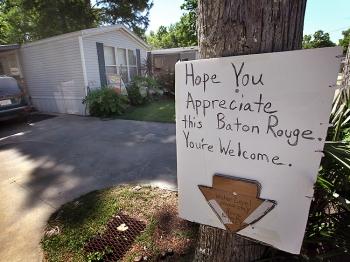
A Butte LaRose homeowner leaves a message for Baton Rouge on May 15. Most of the residents of the small town of Butte LaRose are packing their possessions or moving their entire homes because the town is expected to be severely flooded after the Army Corps of Engineers opened the Morganza Spillway. Scott Olson/Getty Images
|Updated:
Mary Silver writes columns, grows herbs, hikes, and admires the sky. She likes critters, and thinks the best part of being a journalist is learning new stuff all the time. She has a Masters from Emory University, serves on the board of the Georgia chapter of the Society of Professional Journalists, and belongs to the Association of Health Care Journalists.
Author’s Selected Articles

